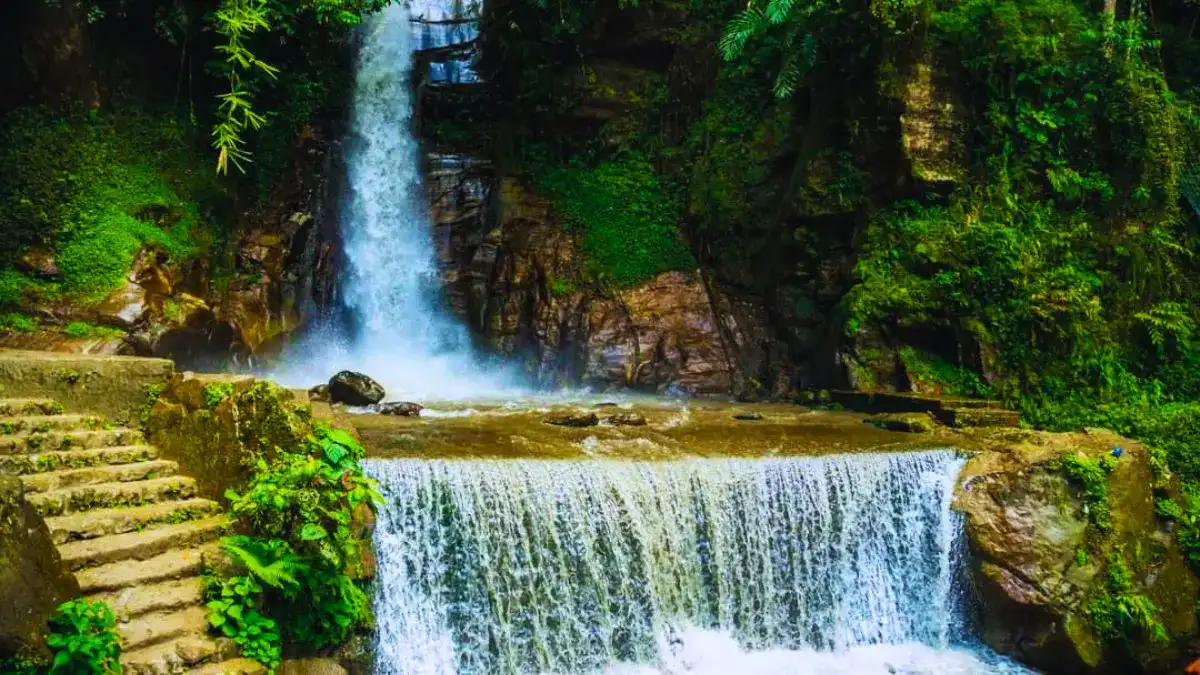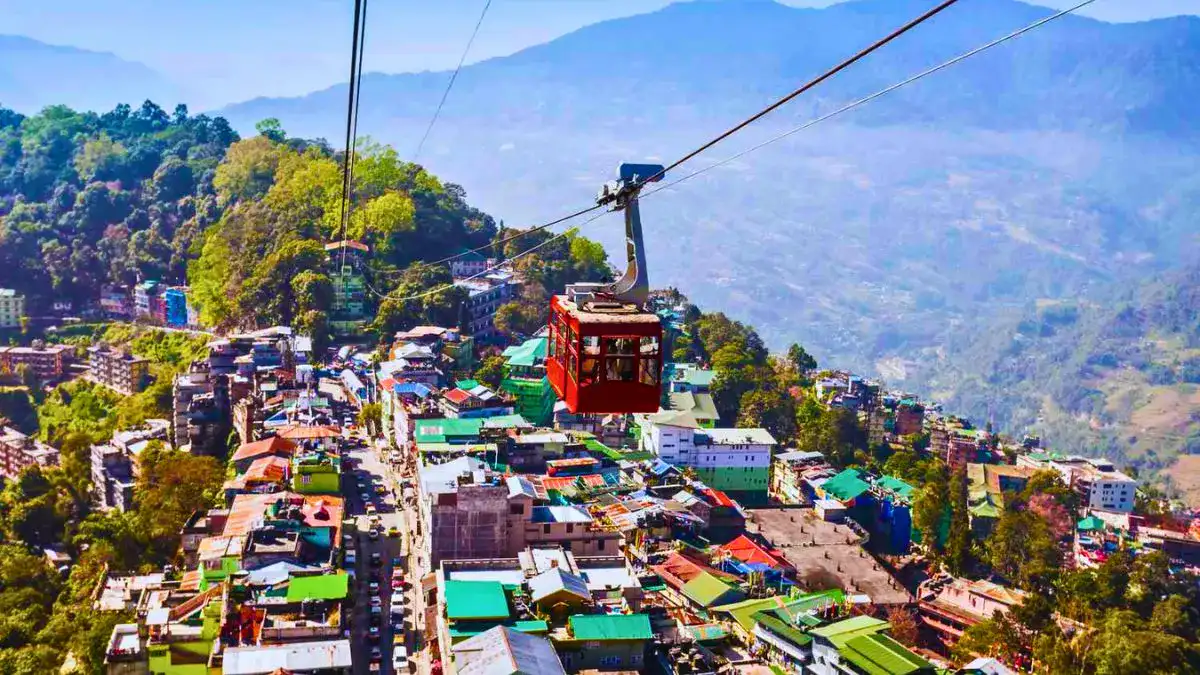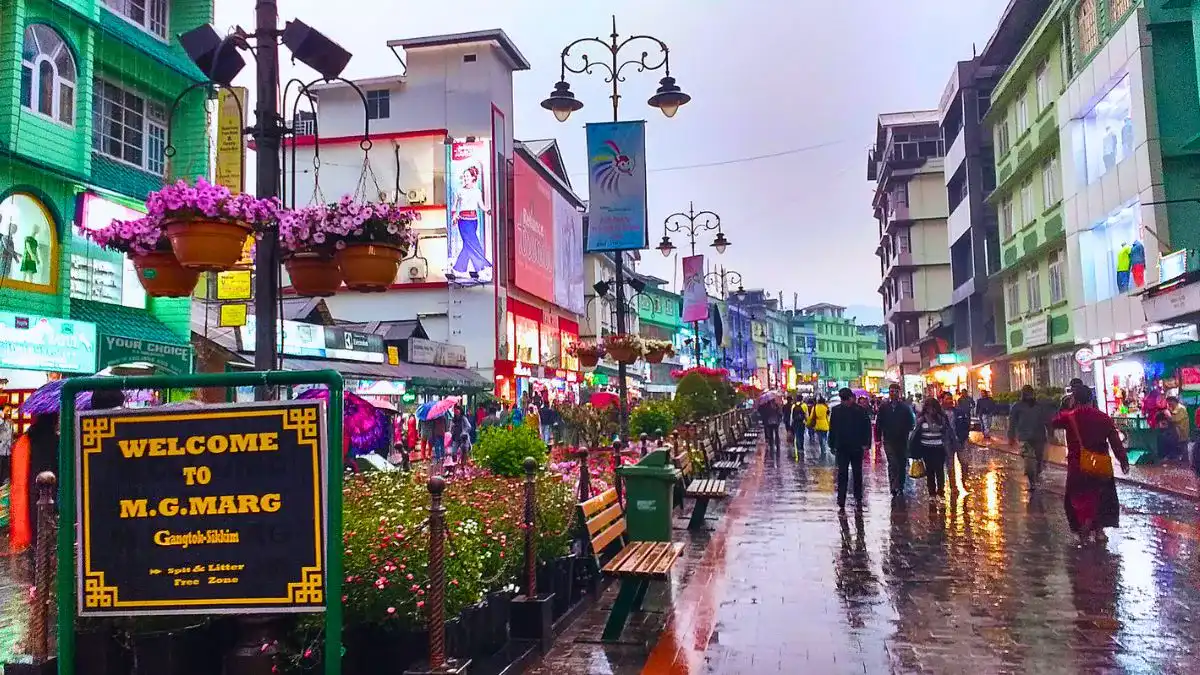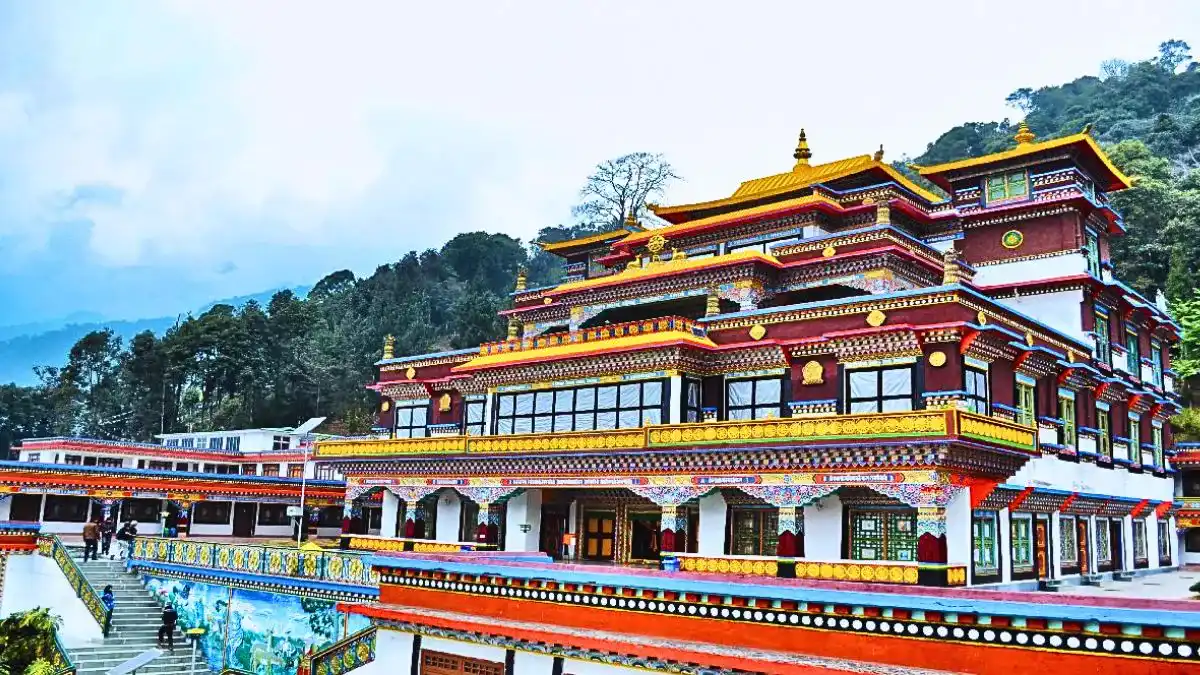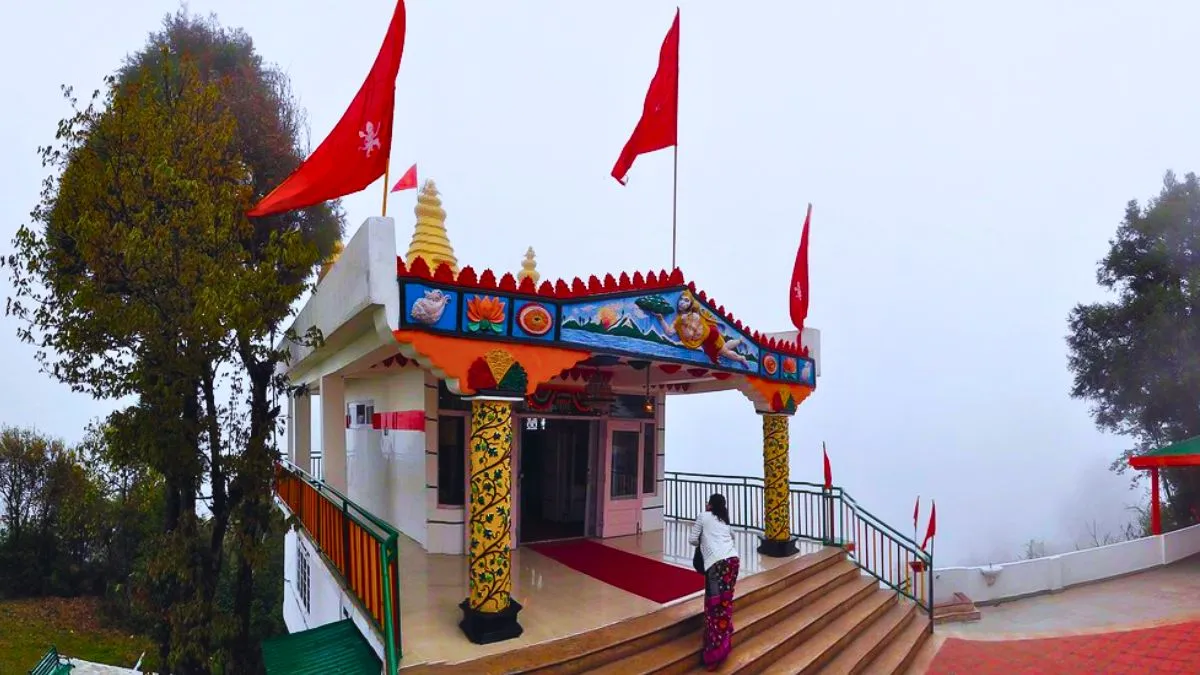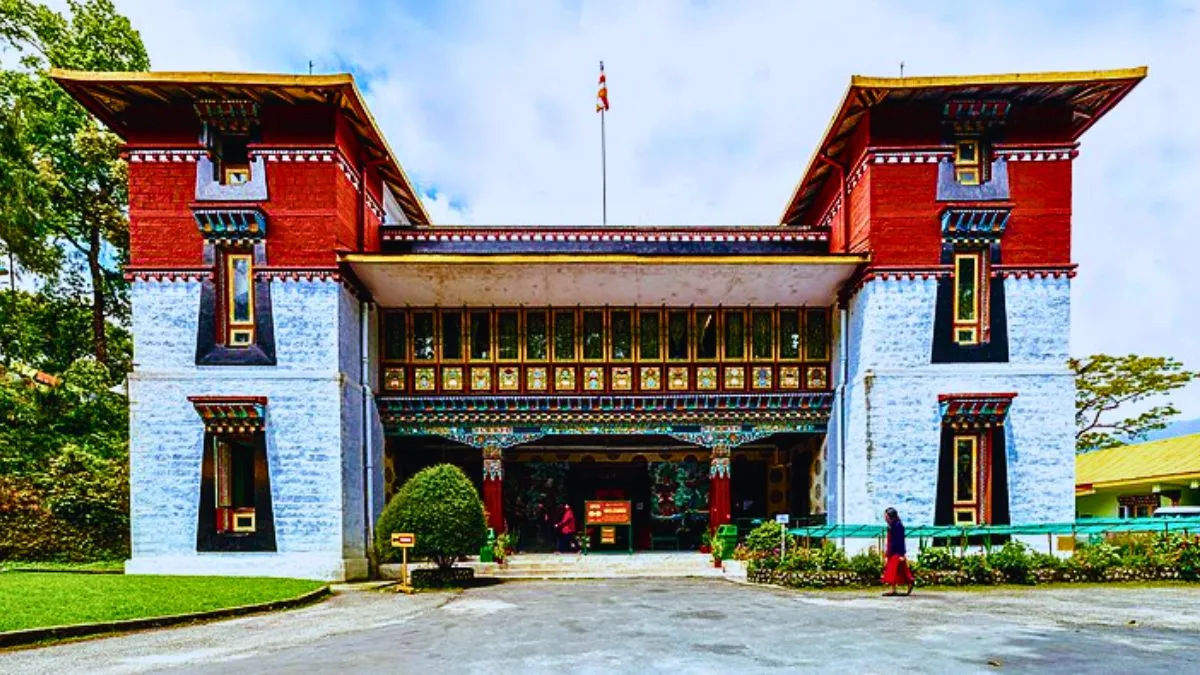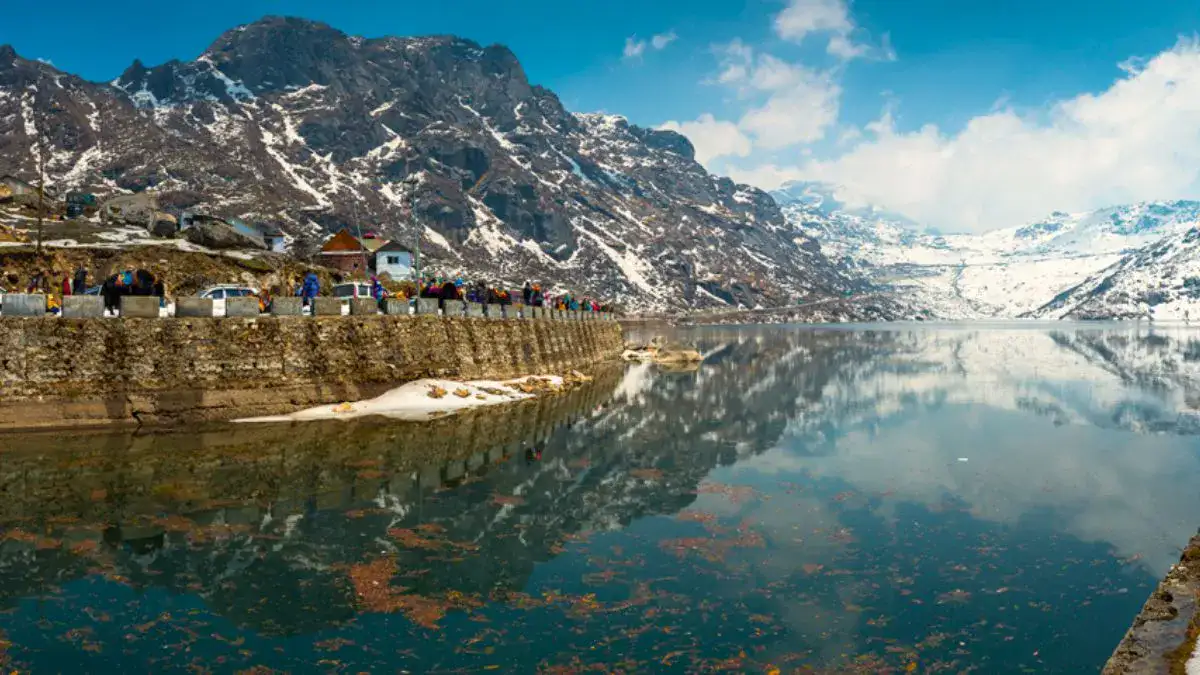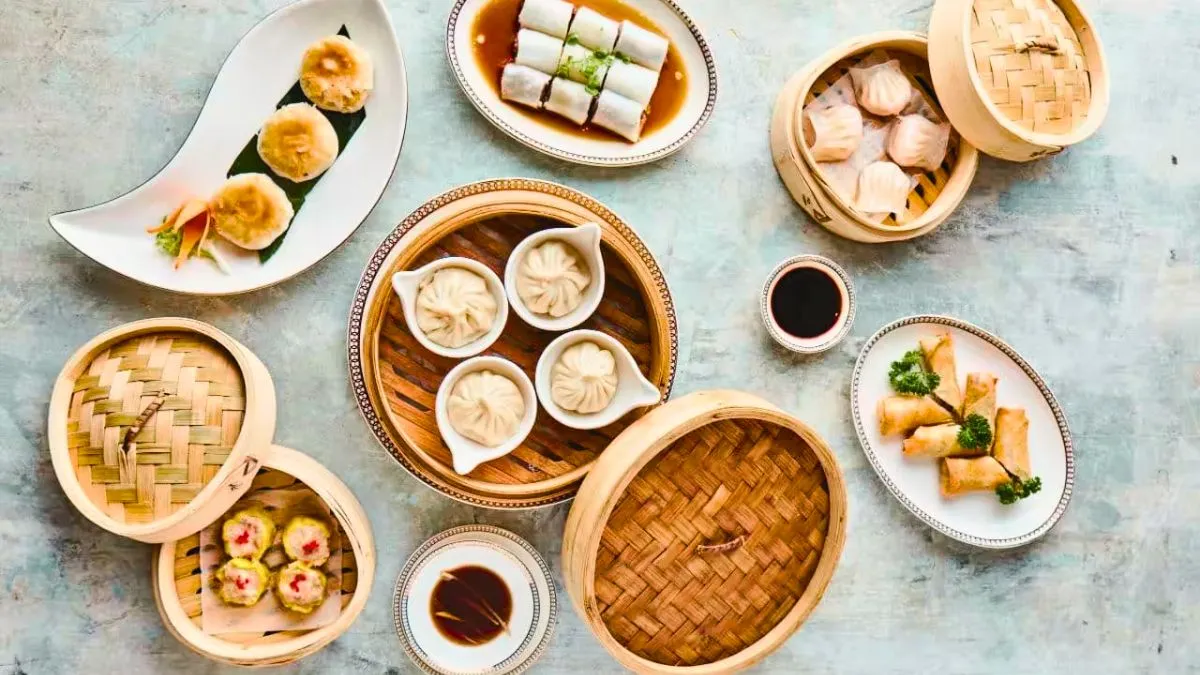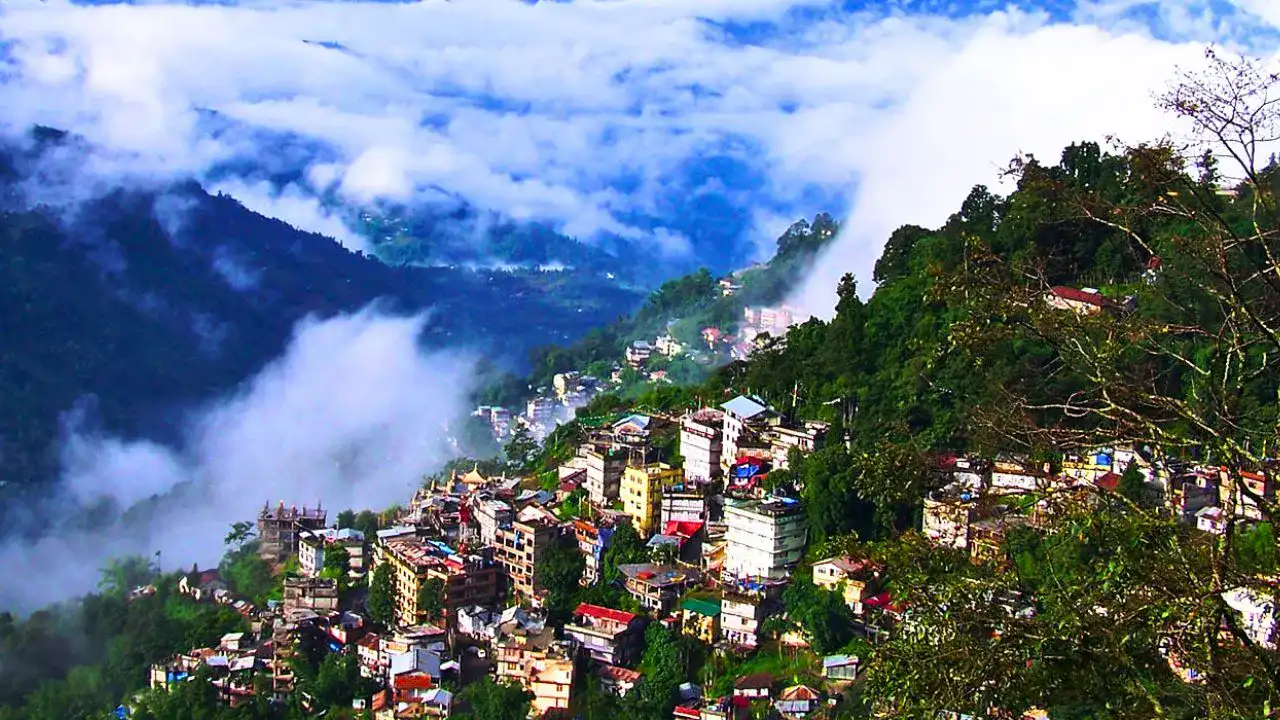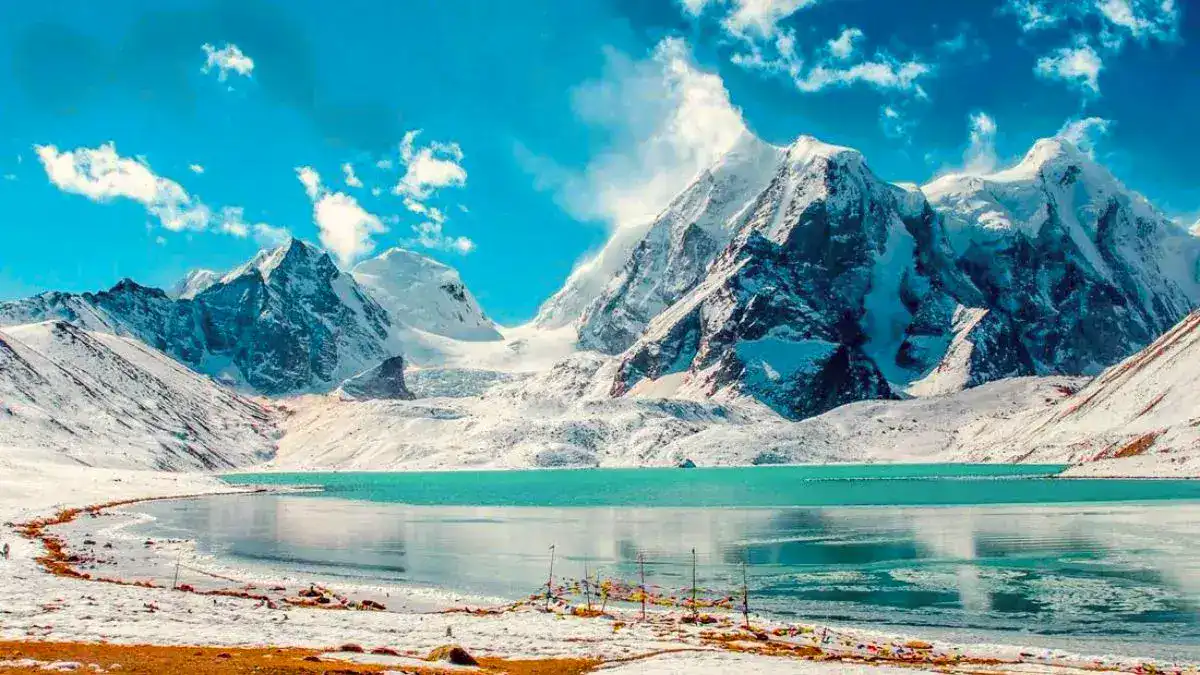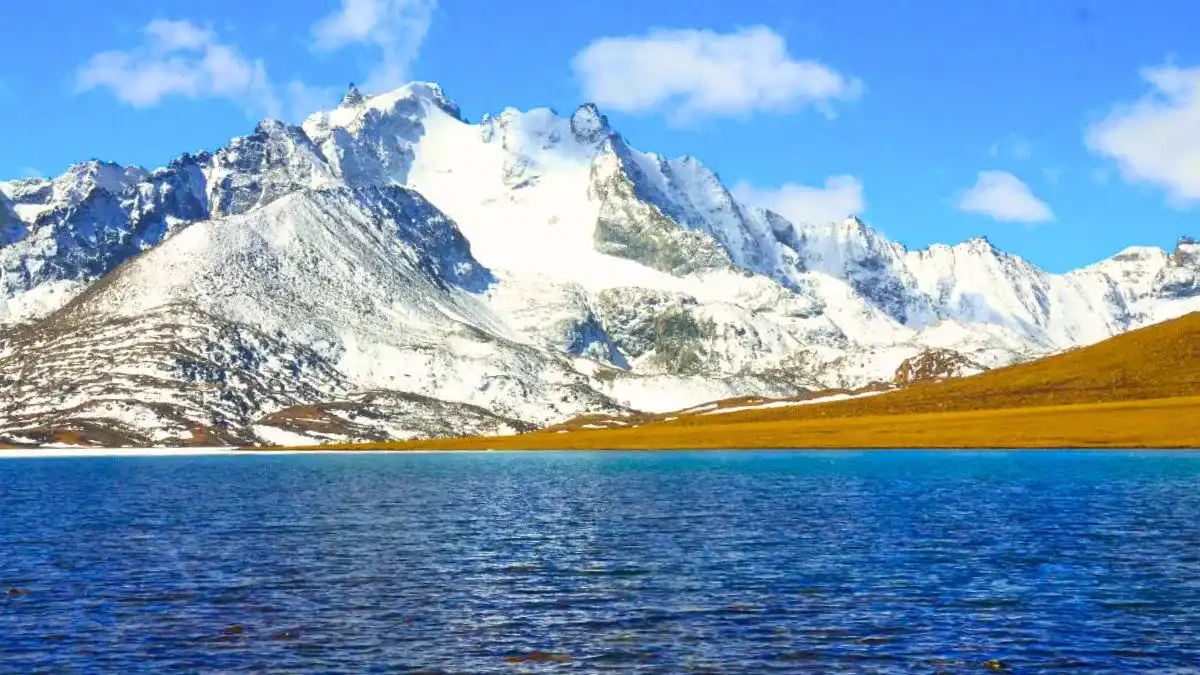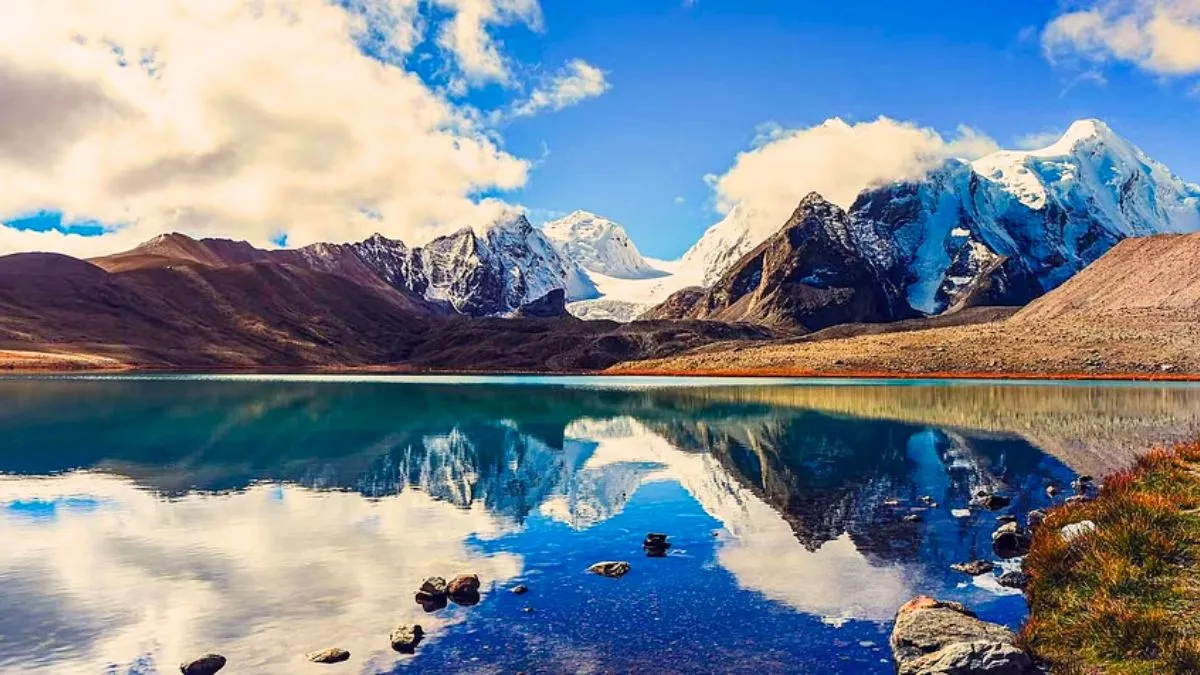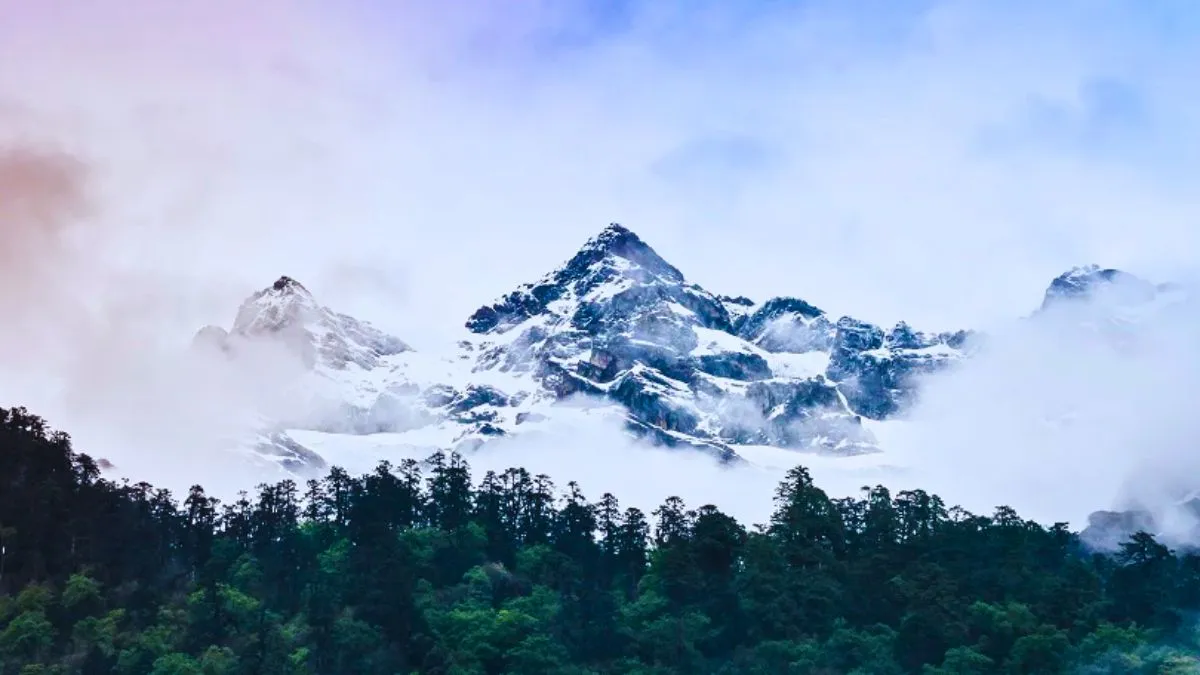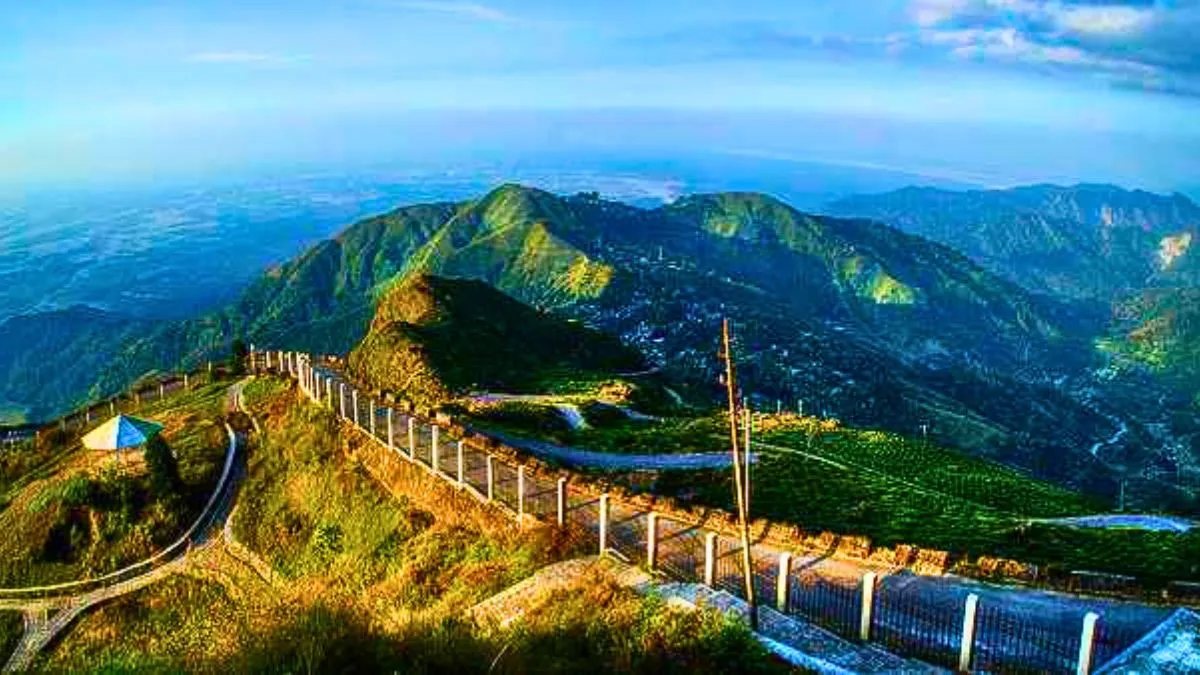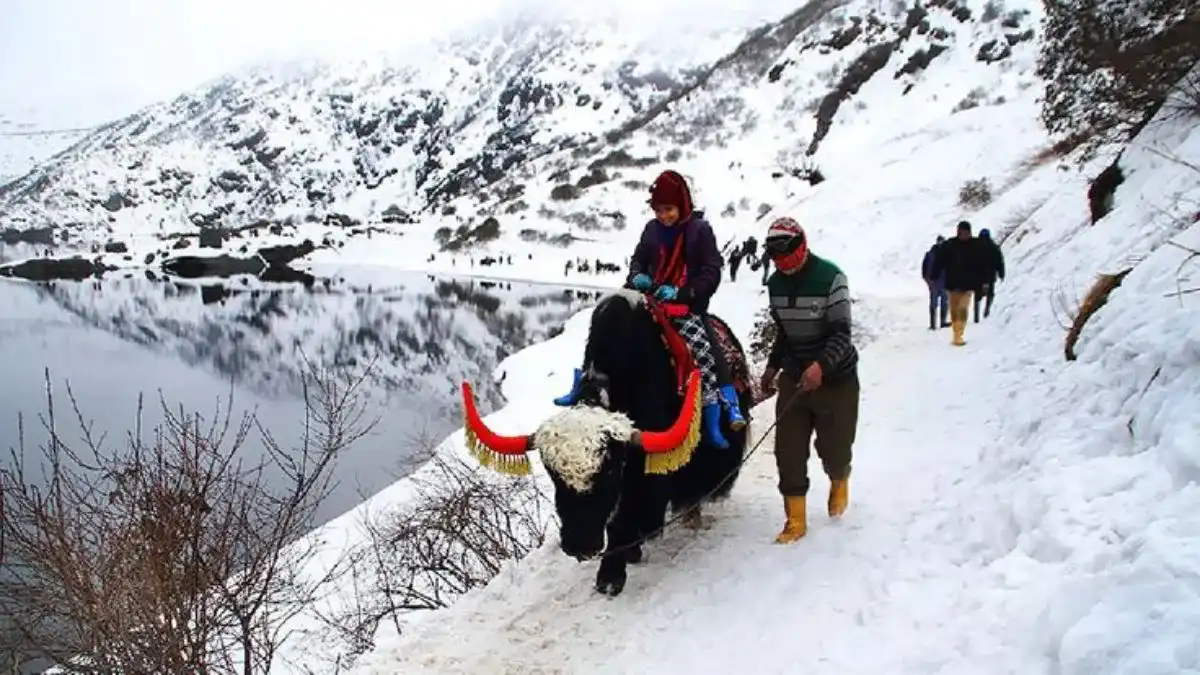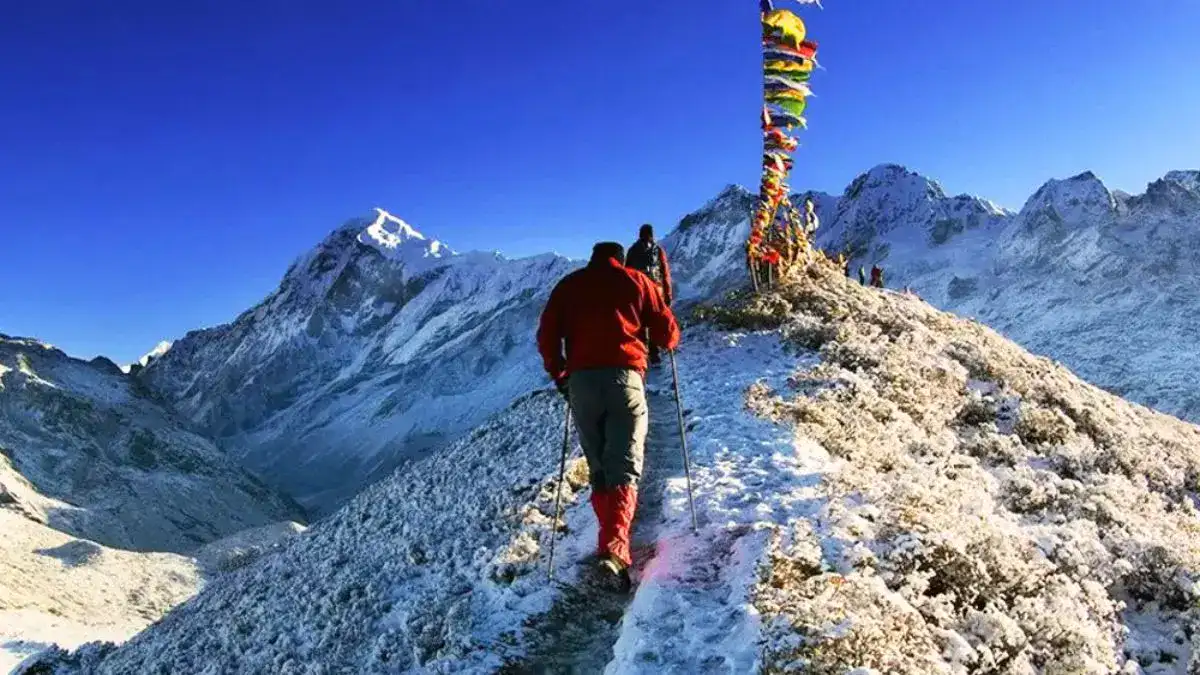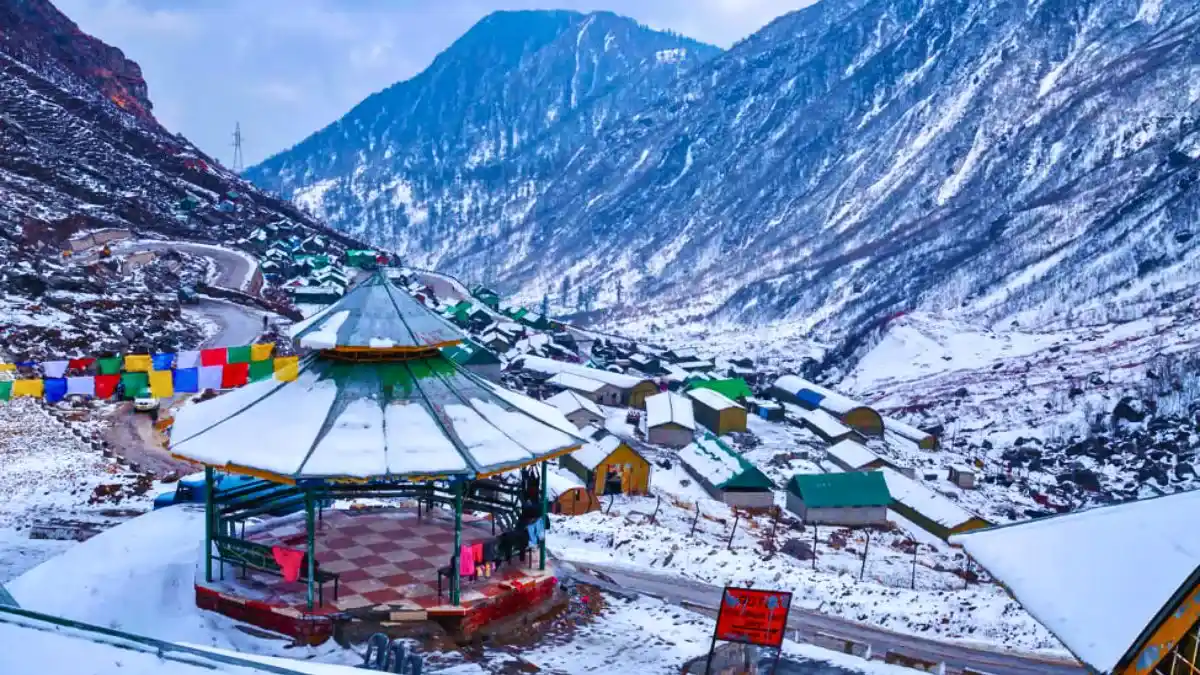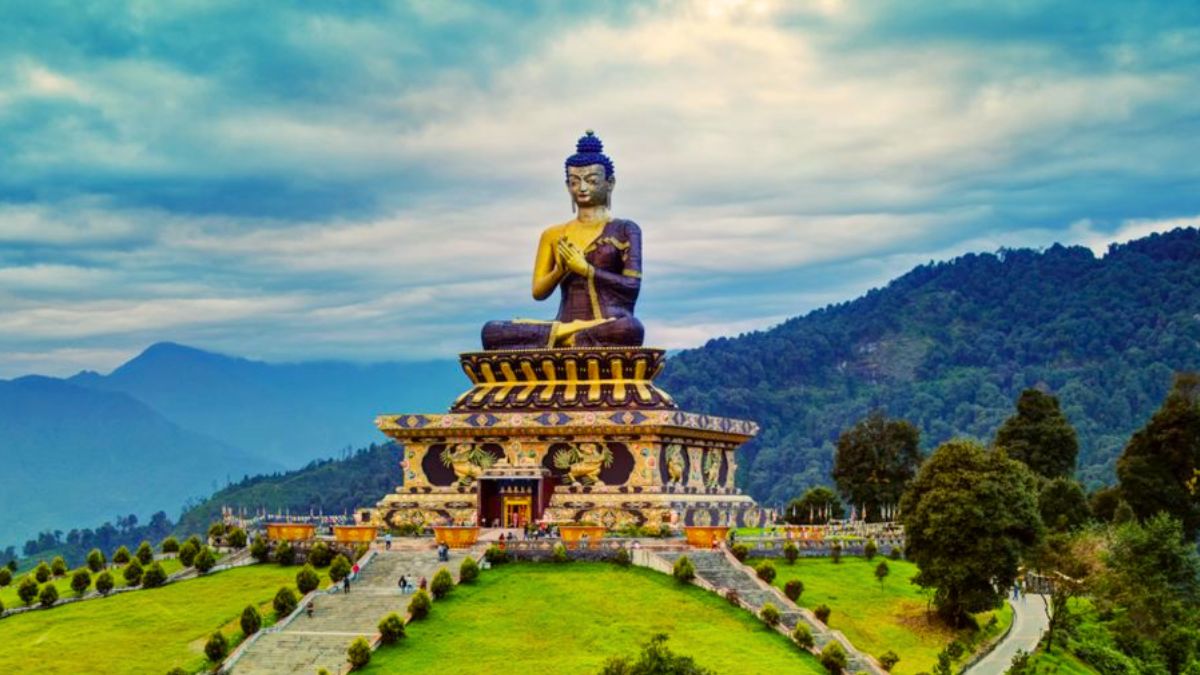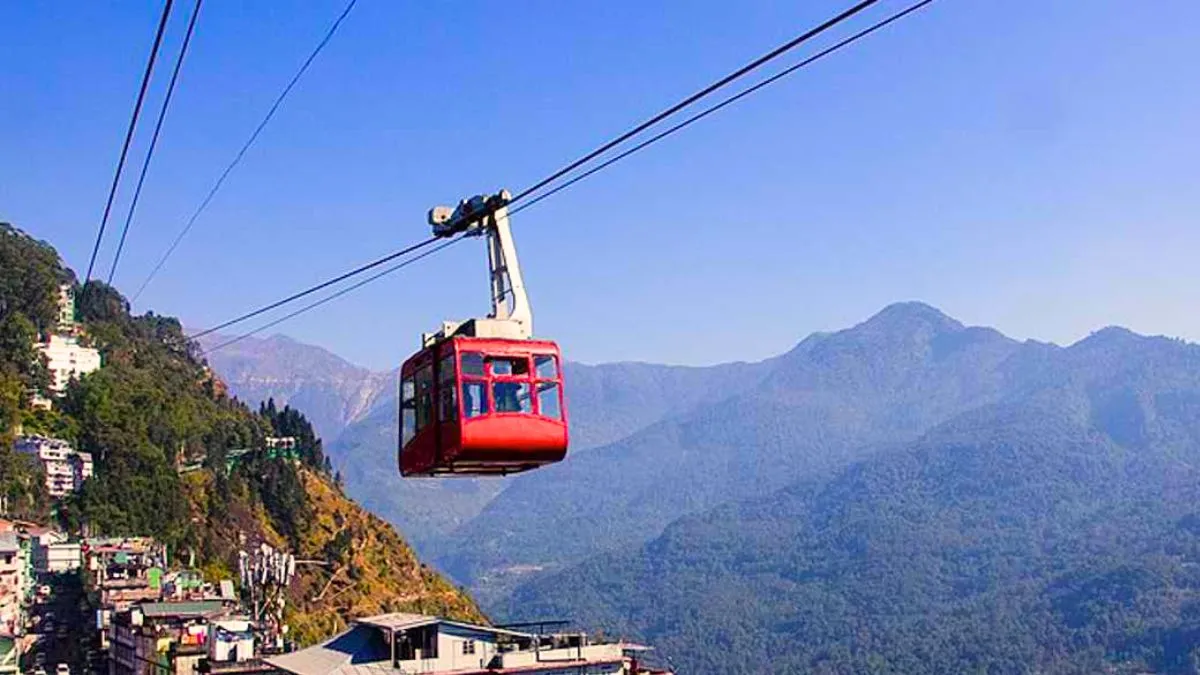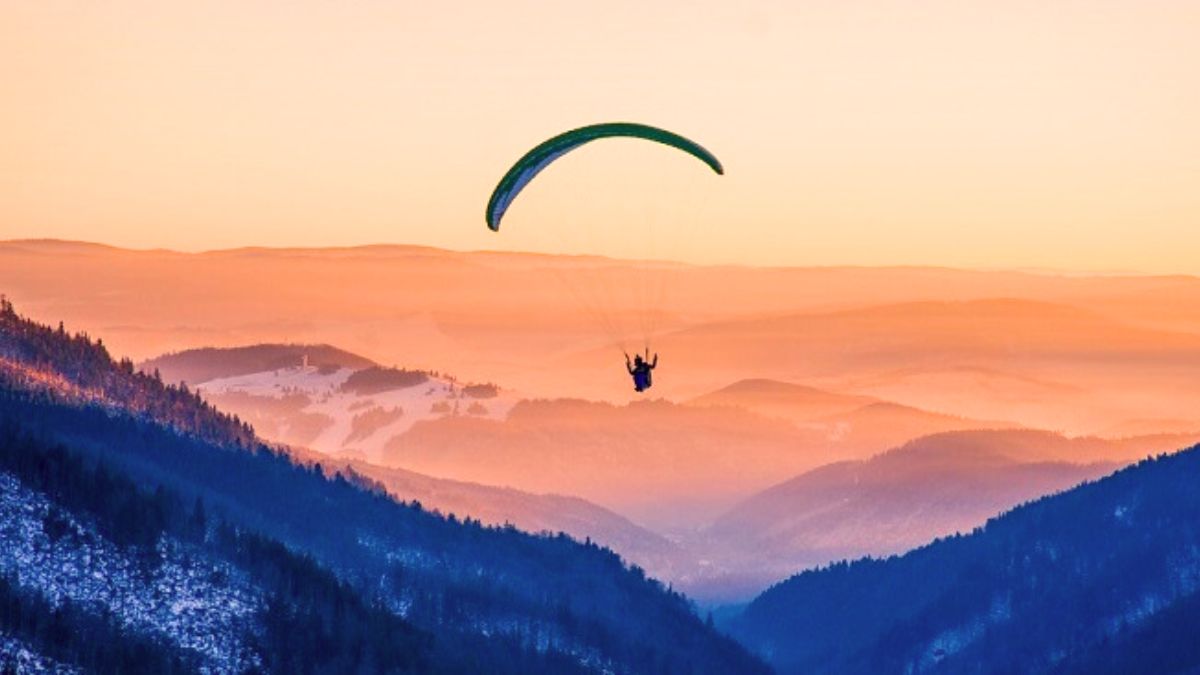Planning a trip to Gangtok? You’re in for an amazing experience!
In this Gangtok Travel Guide, I’ll walk you through everything you need to know before you pack your bags the best places to visit, how to reach, where to stay, and even where to find the tastiest momos! Whether it’s your first trip or you’re visiting again, having a proper gangtok sikkim travel guide can make your journey much easier and a lot more fun.
I’ve traveled to Gangtok, explored the busy MG Marg, tasted the local flavors, and even found some hidden gems off the usual tourist map. Using my own experiences and real travel tips, this guide is here to help you plan better and smarter.
Plus, I’ll share how a simple gangtok travel guide map can save you from getting lost (trust me, it happens even to the best of us!). Ready to explore the beauty and excitement that Gangtok has to offer? Let’s dive right in!
Gangtok Travel Guide
Images of Gangtok
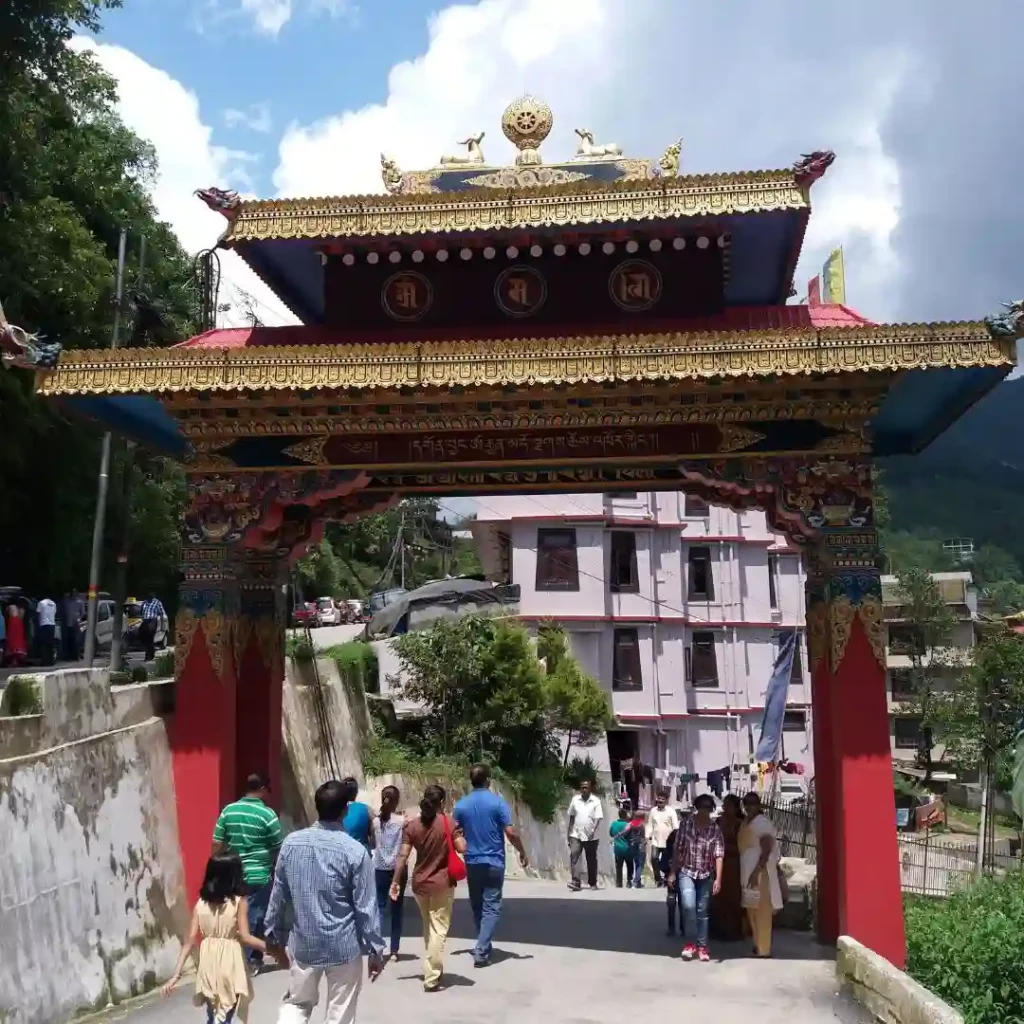
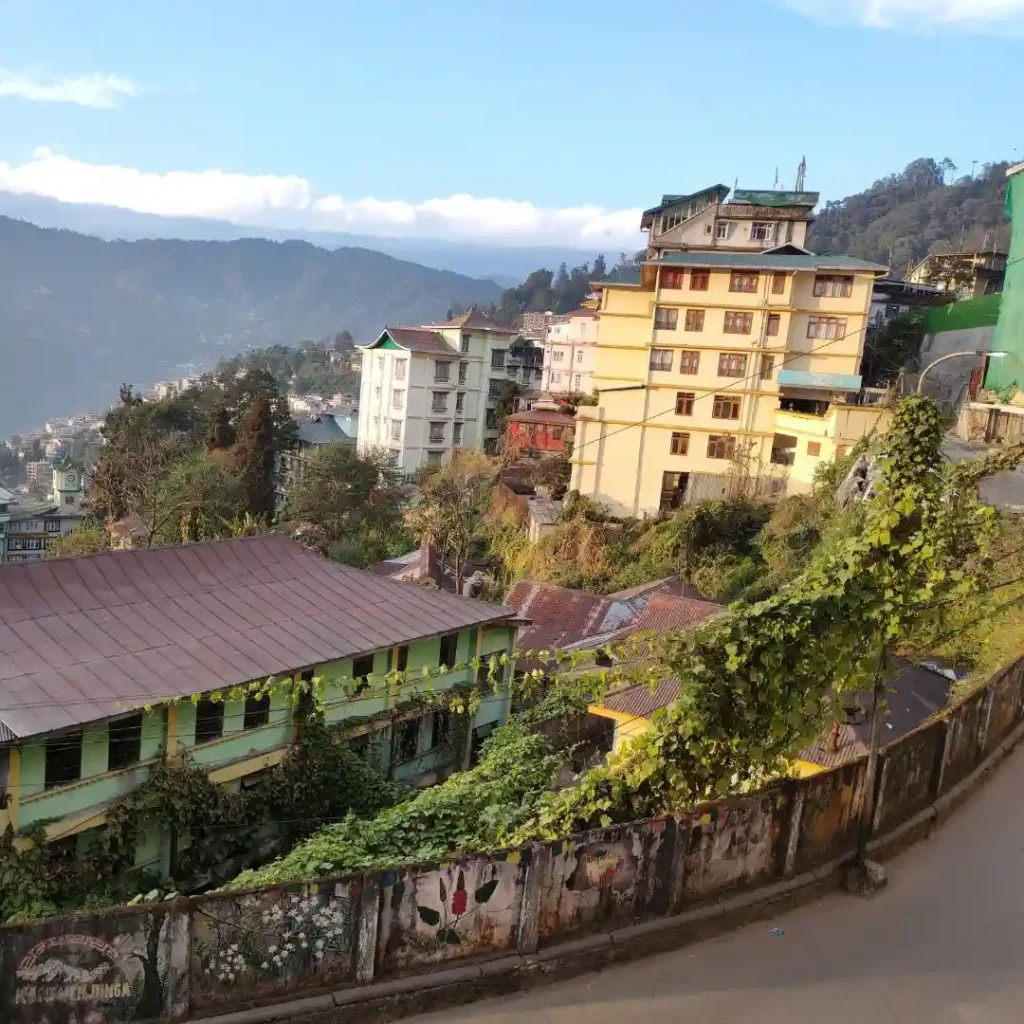

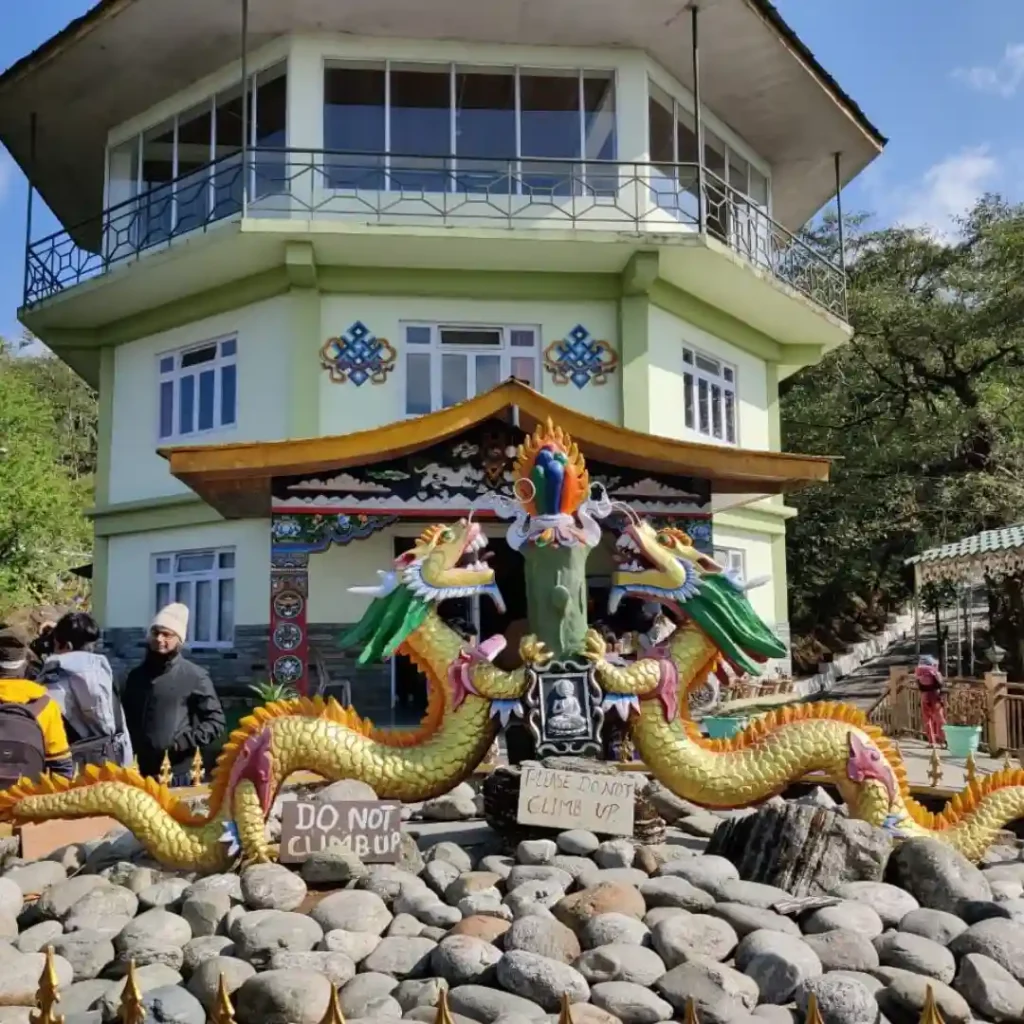
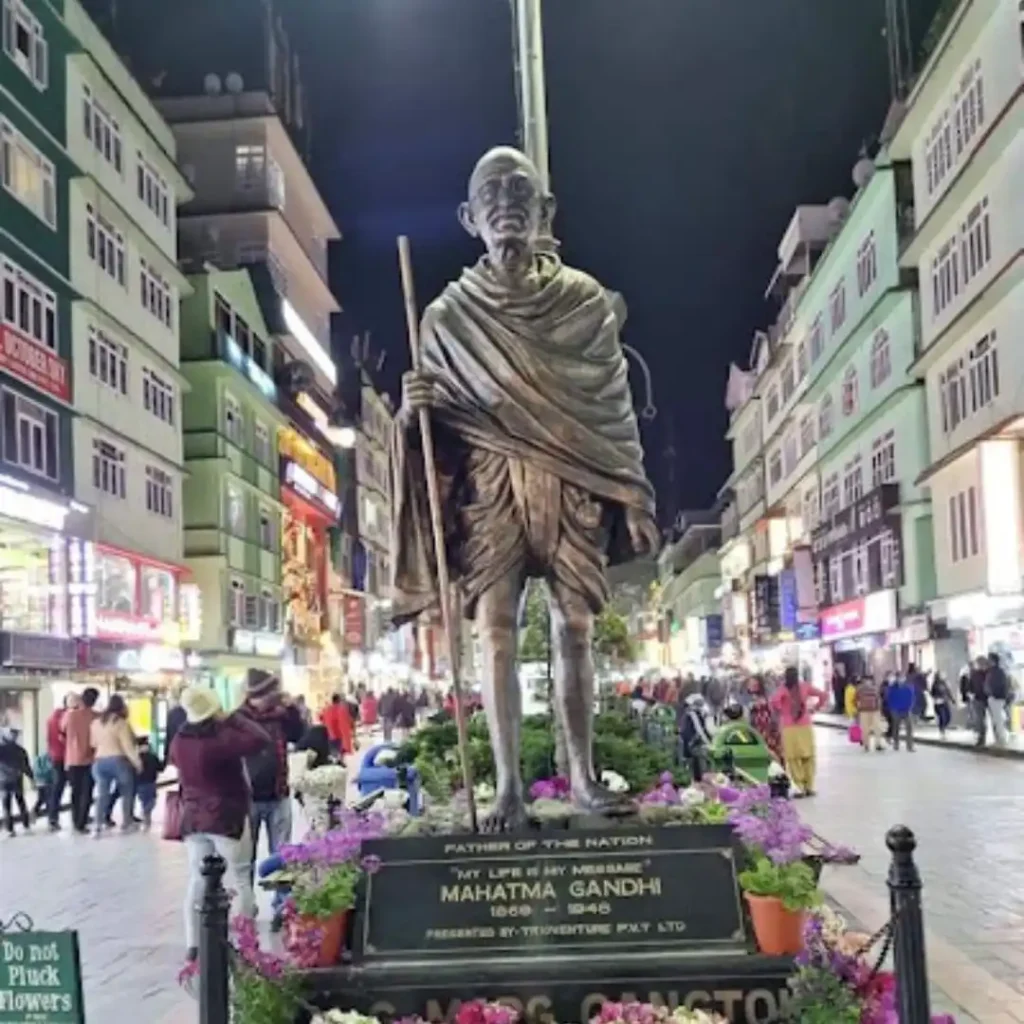
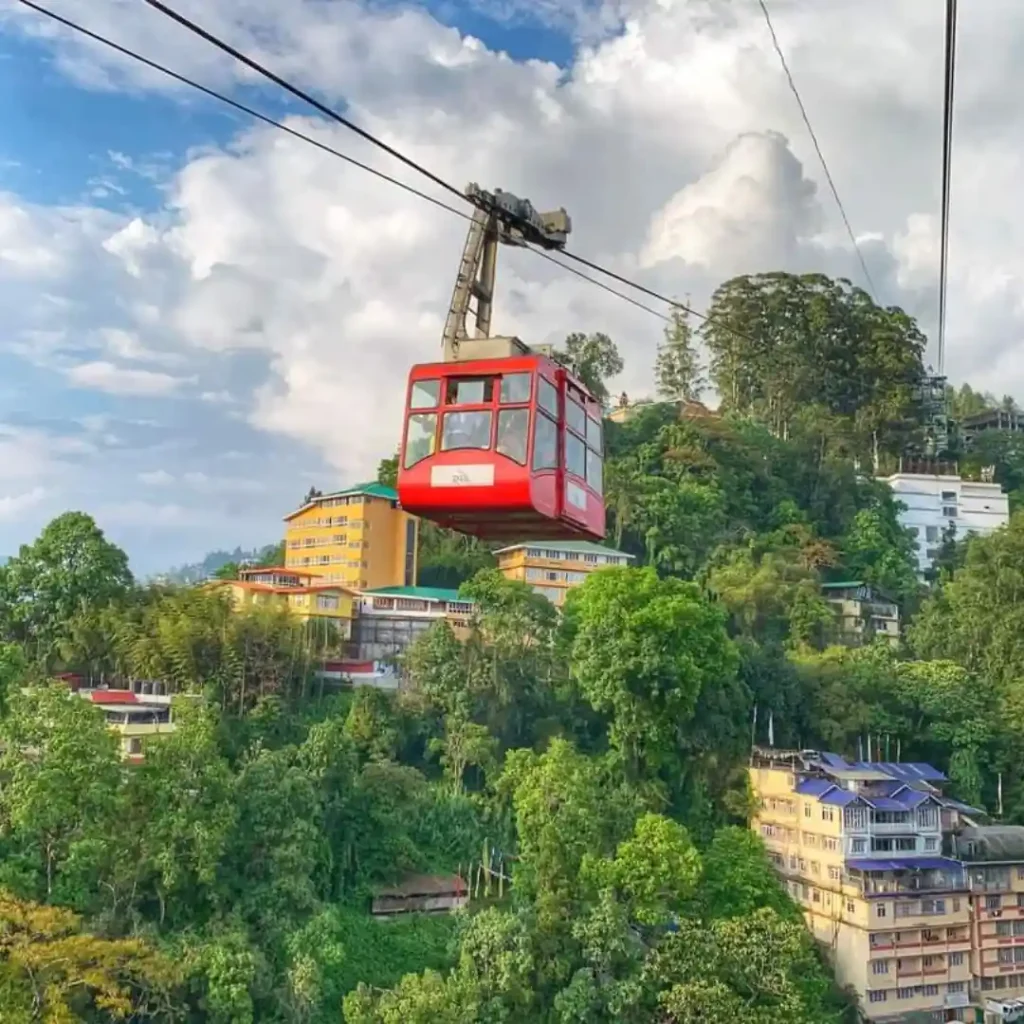
Why Visit Gangtok?
If you’re wondering whether Gangtok should be on your travel list, the answer is a big yes! This beautiful hill town in Sikkim has something for every traveler from peaceful monasteries to thrilling adventure sports and stunning mountain views.
Highlights of Gangtok
- Monasteries: Gangtok is home to some of the most peaceful monasteries like Rumtek and Enchey. They are perfect spots to find a little calm and also learn about Tibetan Buddhism.
- Mountain Views: The views of Mount Kanchenjunga from Gangtok are simply unforgettable, especially early in the morning when the skies are clear.
- Adventure Activities: If you love adventure, Gangtok won’t disappoint. Try paragliding, ride the famous ropeway, or go river rafting nearby for some real excitement.
With the help of a good gangtok sikkim travel guide, you can easily explore all these amazing experiences without missing anything!
Best Seasons to Visit Gangtok
Gangtok is beautiful almost all year round, but the best times are:
- March to June: Perfect for sightseeing, pleasant weather, and blooming flowers everywhere.
- October to December: Clear blue skies and stunning views of the snow-capped peaks make it a photographer’s dream.
- Winter (January-February): If you love snow and don’t mind the cold, this is the time to catch snowfall in nearby areas.
A smart tip from our gangtok sikkim travel guide always check the weather before your trip so you can pack the right clothes and plan your adventures better!
How to Reach Gangtok
Getting to Gangtok is quite simple once you know your options! Here’s a quick guide to help you plan your journey smoothly.
Gangtok By Air
The nearest airport to Gangtok is Pakyong Airport, just about 30 km away. But most of the time its close that’s why many travelers prefer flying to Bagdogra Airport (IXB), which is around 125 km from Gangtok.
From Bagdogra, you can hire a private taxi or take a shared cab to reach Gangtok the drive usually takes about 4-5 hours through scenic mountain roads.
Gangtok By Train
This one is the most affordable and esey,if you’re coming by train, the closest railway stations are:
- New Jalpaiguri (NJP) – about 120 km away.
- Siliguri Junction (SGUJ) – around 114 km away.
Both stations are well connected to major cities across India. From there, you can easily book a cab or bus to Gangtok.
Gangtok By Road
Love road trips? Gangtok is very well connected by road! You can book a shared cab (popular and budget-friendly) or hire a private taxi for more comfort. Most of the time Roads are in good condition but do expect some twists and turns in the hills.
If you’re planning a self drive trip, make sure you have a reliable Gangtok travel guide map with you. It’ll help you stay on the right track, especially when mobile networks get patchy in the hills!
Sightseeing in Gangtok
Gangtok is full of amazing natural beauty. You will see tall mountains with snow on top and green forests all around. If you are planning a trip, even spending one or two days in Gangtok will be worth it!
Gangtok is in the northeast part of India, near the great Himalayas. The city feels peaceful and lively at the same time because of its colorful culture.
You can walk around and find many interesting places old monasteries, quiet lakes, and flowing rivers. Every place has something special to offer and will give you memories to keep forever.
The following locations are the best places to visit in Gangtok:
Also Read: Places to Visit in Gangtok
Ban Jhakri Falls
Ban Jhakri Waterfalls is one of the must visit places near Gangtok. It is about 7.5 km away from the city and has a beautiful 100 foot high waterfall. The best time to visit is between October and February when the weather is nice and comfortable.
The waterfall is surrounded by lots of green trees and plants, giving the place a fresh and calm feeling. There’s also a small man made lake with a dragon statue that you can see. Around the falls, you will find traditional statues and a clean water pool. All these make Ban Jhakri Waterfalls a favorite spot for many tourists.
Gangtok Ropeway
The Gangtok Ropeway is a great way to see the city from above. It is 935 meters long and connects Deorali Bazar to Tashiling Secretariat. Built in 2003, the ropeway is just 1.9 km from the city center. It runs every day from 9:30 am to 6:00 pm.
You can buy tickets either online or at the spot. The two-way ticket costs Rs 130 for adults and a lower price for children aged 3 to 5 years. The Gangtok Ropeway is a fun, affordable, and easy way to enjoy beautiful views of Gangtok.
M G Marg Road
M G Marg is one of the most popular places to visit in Gangtok. The street is full of shops, hotels, and restaurants. Every December, it hosts the Gangtok Culinary Festival, which is loved by food lovers. M G Marg is also special because it is the first area in Gangtok that is clean, smoke-free, and litter-free.
Many people call it “London Street” because of its old-style street lights, just like the ones you see in London. It’s right in the heart of Gangtok and has the famous Statue of Unity. The area is also perfect for walking around, relaxing, and enjoying the lively atmosphere.
Lingdum Monastery
Lingdum Monastery, located in Lingdum village, is a Tibetan Buddhist monastery built in 1999. Located 15.4 km from Gangtok, it offers scenic views and a large Buddha statue.
Built by Zurmand Gharwang Rinpoche, the 12th successive incarnation of the Kagyupa Sect, the monastery reflects Tibetan architectural style and emphasizes people as a place of worship. Visit during Spring and Autumn for the best viewing.
Hanuman Tok
Hanuman Tok is a peaceful Hindu temple in Gangtok, dedicated to Lord Hanuman. It offers a calm and spiritual experience for everyone who visits. The temple is located 7.9 km from Gangtok, and it takes about 20 minutes to get there.
The temple shows Lord Hanuman resting while carrying the Sanjeevani herb for Lakshmana, who was injured in the Ramayana. The Indian Army takes care of the temple, and its strong spiritual significance, along with the belief that it fulfills wishes, makes it a popular spot for tourists.
Black Cat Museum
The Black Cat Museum in Sikkim, opened in 2018, is a modern museum that highlights the rich history of the region. It features a photo gallery and a special tribute to the Special Frontier Force (SFF).
The museum is open daily and offers a souvenir shop, an audio tour guide system, and even a selfie room for visitors. Located 3.5 km from Gangtok, it showcases military artifacts, interactive displays, and life-sized figures. On May 14, 2022, the Governor of Sikkim, Shri Ganga Prasad, introduced a 10-foot-tall Ashok Stambh at the museum.
Tashi Viewpoint
Tashi Viewpoint is a beautiful spot located 6000 feet above sea level. From here, you can enjoy wide and amazing views of Kanchenjunga, the world’s third-highest mountain. It is about 7.3 km from Gangtok and takes around 30 minutes to reach. The best part is that there is no entry fee.
Visitors can also explore nearby monasteries, go birdwatching, and enjoy photography. It’s a great place to relax and take in the natural beauty around Gangtok.
Menmecho Lake
Menmecho Lake is a beautiful and peaceful place hidden high in the Himalayas, at a height of 12,500 feet. It is about 63.9 kilometers from Gangtok and can be reached by taxi or private vehicle.
Visitors can also take a short 4-kilometer walk from Baba Mandir to reach the lake. Since the lake freezes quickly during winter, late summer is the best time to visit. Surrounded by mountains and trees, the calm setting makes it a wonderful place to relax and enjoy nature.
Things to Do in Gangtok
Gangtok is full of exciting things to see and do.Whether you love nature, adventure, or culture, this city has something for everyone.
From peaceful monasteries to busy shopping streets, Gangtok promises a trip you won’t forget.
| Activity | Description | Location/Tip |
|---|---|---|
| Ride the Cable Car | Enjoy stunning aerial views of Gangtok, the mountains, and the river below on this 1 km-long ropeway. | Starts at Deorali; get down at Tashiling or Namnang stations. |
| Sample Local Cuisine | Treat your taste buds with momos, thukpa, Phagshapa (pork with radish), and Gundruk soup. Don’t miss local millet beer, Tongba. | Head to Taste of Tibet or Nimtho for authentic local flavors. |
| Shop at Lal Bazaar | A great place to buy handicrafts, organic tea, local spices, traditional attire, and chhurpi (hardened cheese). | Visit on Sundays for the local haat (market day). |
| Attend Cultural Festivals | Witness the traditional music, masked dances, and local rituals during festivals like Losar (Tibetan New Year) and Saga Dawa (Buddha’s birth anniversary). | Time your trip during February-March (Losar) or May-June (Saga Dawa). |
| Try Adventure Sports | River rafting on the Teesta River and paragliding from nearby Reshithang offer adrenaline-filled experiences. | Book via certified local operators; best season is March to June. |
| Stroll MG Marg | This pedestrian-only zone is the heart of Gangtok, perfect for leisure walks, photography, and trying out street food. | Ideal during evening hours for live music, food, and people-watching. |
| Visit a Tea Garden | Visit the Temi Tea Garden to learn about organic tea processing and walk through lush plantations. | Take a short trip from Gangtok, especially during spring or autumn for lush green views. |
| Relax at a Café | Gangtok has some serene hill cafés offering panoramic views, books, and great food. | Café Fiction, The Coffee Shop, and Baker’s Café are popular picks. |
Insider Tip: Always check the operating hours and weather conditions before planning outdoor activities, especially in winter or during monsoon months.
Do You Need Permits to Visit Gangtok?
No, you usually don’t need a permit. However, if you plan to travel to places like Nathula Pass, Tsomgo Lake, or other areas near the borders, you will need a special permit.
These permits are easy to get through local travel agents or hotels once you are in Gangtok.
Documents Required:
- Two passport-sized photographs
- Valid government ID (Passport/Aadhaar/Voter ID)
Gangtok by Months
Gangtok has a cool and pleasant climate all year round, making it a perfect place to escape the heat. The foggy mornings and frequent rain showers give the town a special charm and peaceful feeling.
But when planning any trip, it’s always smart to be prepared for different weather. On cloudy days, you might enjoy relaxing with a book, or you might love the cool weather even more than sunny days.
That’s why it’s important to think about the seasons before you visit. Choose the time that suits you best for your trip to Gangtok!
Gangtok In Spring (March – April)
Gangtok welcomes spring with cool and pleasant weather, with temperatures between 11°C to 24°C. The sky stays mostly clear, and you can enjoy amazing views of the snow-covered mountains, including Kanchenjunga. During late March and early April, the Lampokhari Tourism Festival brings many visitors who come for fun, adventure, and cultural activities.
You can go hiking, paragliding, mountain cycling, and even rock climbing during this season. Gangtok looks beautiful with flowers blooming and green valleys all around. A quick tip for spring: carry light sweaters, warm scarves, a raincoat, and make sure you book your travel and stay early!
Gangtok In Summer (May – July)
Gangtok’s summer season is warm but not too hot, making it a nice time to visit. In June, the rains start slowly, blending spring and summer together in a lovely way. In May, the town becomes colorful during the International Flower Festival, showing off a huge variety of blooms.
Summer is perfect for exploring Gangtok under clear skies and enjoying beautiful mountain views. June also marks the start of the quieter season, a good time if you want a peaceful trip. When planning, just remember to think about the weather, outdoor activities, and the best views before the rainy days begin.
Gangtok In Monsoon (June – September)
Gangtok sees a lot of rain and sometimes landslides during the monsoon season. Mornings are usually foggy, and it’s rare to see the sun. During this time, people celebrate Dashain, a famous two-week festival honoring Goddess Durga. Families wear new clothes, enjoy big meals, fly kites, and set up village swings.
The festival brings a special charm to Gangtok, making it a peaceful time for relaxing or reading a book. However, visitors should be careful about landslides and misty weather. It’s a good idea to pack warm clothes, a raincoat, and strong shoes to stay safe during the rainy season.
Gangtok In Autumn (October – November)
Gangtok’s autumn brings cozy days and lovely climate, temperatures teeter between 6°C and 18°C. This brief season hosts artistic and notable festivities like Namchi Mahotsav in October.
Flower displays, food events, handicrafts, and traditional dance shows are part of the joy. The friendly temperature and charming weather pave the way for exploration and sightseeing. But remember, tourism is high, so securing tickets early is advised. Pack light wool clothes, sturdy pants, and jackets to stay snug while your tour.
Gangtok In Winter (December – February)
Winter in Gangtok brings a cool chill, with temperatures between 4°C and 7°C. It’s a fun time to visit, especially with New Year and Christmas celebrations filling the air with joy. The Gangtok Food and Culture Festival is another highlight, where you can dive into local traditions, enjoy lively music, and taste delicious local food.
The city is beautifully lit up during the evenings, giving it a magical, almost fairytale like feel, even though snow is a rare sight.
To stay warm, pack cozy sweaters, warm jackets, and insulated pants. If you want extra comfort, staying in heated lodgings is a good idea. And if you’re looking for a little adventure, a three hour car ride will take you to Nathula Pass, where the views are absolutely worth the trip.
Where to Stay in Gangtok
| Category | Options | Average Cost (per night) |
|---|---|---|
| Budget | Hostels, Guesthouses | INR 700 – 1,200 |
| Mid range | Boutique hotels, homestays | INR 1,500 – 3,000 |
| Luxury | Resorts with mountain views | INR 4,000 – 10,000+ |
Suggested Itineraries
Whether you’re on a quick getaway or an extended holiday, here are curated itineraries that help you make the most of your time in Gangtok.
4-Day Suggested Itinerary for Gangtok
Day 1: Arrival and Leisure
Arrive in Gangtok by afternoon or evening. Check into your hotel and take some time to relax. Head out in the evening to MG Marg, the bustling town center. Enjoy a relaxed stroll, explore local handicraft stores, sip Sikkimese tea, or try some momos. If you’re in the mood, end the night at a cozy cafe or pub with live music.
Day 2: City Exploration
Start your day with a delicious breakfast. Begin sightseeing with Hanuman Tok, followed by the peaceful Rumtek Monastery and the culturally rich Namgyal Institute of Tibetology. Enjoy lunch at a local restaurant near MG Marg.
Post lunch, hop on the Ropeway for panoramic views of the city. Spend your evening shopping for souvenirs and trying out street snacks. Be sure to coordinate with a local tour agent to get your permit arranged for Nathula Pass in advance.
Day 3: Excursion to High Altitude Wonders
Book a taxi early in the morning for the Nathula Pass excursion. Visit the Baba Harbhajan Singh Memorial Temple and Nathula Pass. On the return journey, stop by the mesmerizing Tsomgo Lake try yak rides or sip hot tea by the lakeside. If time allows, visit the Flower Exhibition Centre once you’re back in Gangtok. Wind down the evening at MG Marg one last time.
Day 4: Departure via Scenic Route
After breakfast, prepare for your return journey to Bagdogra or New Jalpaiguri. On your way down, you can optionally stop for white water rafting in the Teesta River (check timing compatibility with your flight/train). Enjoy the views one last time and plan your next visit already!
Pro Tip: Always keep buffer time for high altitude excursions and check for weather updates, especially for Nathula Pass and Tsomgo Lake.
Conclusion
Gangtok is a place that will steal your heart. With its beautiful mountain views, peaceful vibe, and rich culture, it’s the perfect spot to relax and explore. Whether you’re enjoying the sights, tasting local food, or just taking in the fresh air, every moment here feels unforgettable.
If you’re ready to experience all that Gangtok has to offer, don’t wait! Check out our Sikkim Tour Packages and start planning your dream trip to Gangtok today. You won’t regret it!
Frequently Asked Questions
Why is Gangtok so famous?
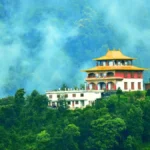
Tourists often visit Gangtok because of its many natural beauties, including Tsomgo Lake, Ban Jhakri Falls, and Tashi Viewpoint. Gangtok is well-known for its incredible view of Mount Kanchenjunga.
Which is the best month to visit Gangtok?

The beautiful weather in Gangtok allows visitors to unwind and take in the city’s sightseeing from around mid-September to mid-November. During the cool summer months of March through June, you may also go on explorations in Gangtok.
Is 2 days enough for Gangtok?
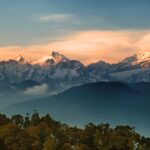
It takes two to three days to fully explore Gangtok and the surrounding area. Take a day to see the city’s restaurants and museums. Take a day trip to Tsomgo Lake and Nathu La on the second day.
Is there snowfall in Gangtok?
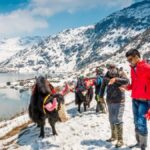
Snowfall is hardly seen in Gangtok. However, during the winter, significant snowfall occurs in locations like Yumthang, Zero Point, Lachung, Lachen, Kupup Lake, and Tsomgo Lake.
Is Gangtok cold or Darjeeling?
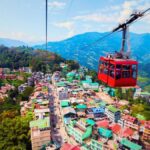
Gangtok’s weather is similar to Darjeeling’s since it has stayed relatively cool, making it an ideal destination for a holiday.


